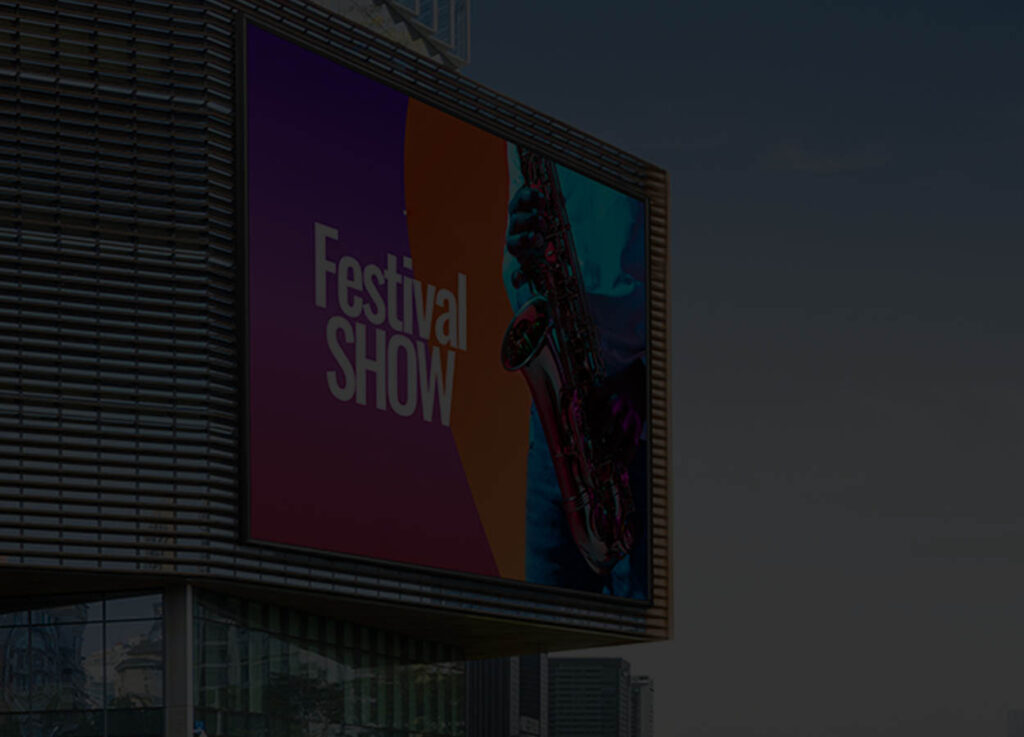
Common specifications of outdoor LED screen: The display screen has great functions and is mainly used to play various video images.
It can be used for meetings and advertising.
Most of the display screens currently on the market are LED, and the use effect of this kind of LED display will be better, which is unmatched by traditional projection.
Outdoor LED display is a relatively common and widely used outdoor display.
There are also many models. The more common models before were P16 and P20. Nowadays, the commonly used ones are P10, P8, etc.
which are more popular among users, The reduction of models makes the pictures of outdoor LED displays clearer and clearer, and the user experience becomes better and better.
But in the selection process, there are many parameters for outdoor LED display screens.
Let’s take a look at the Common specifications of outdoor LED screen.
Pixel spacing:
Pixel pitch is the physical distance between two adjacent LED pixels on an LED display, usually expressed in millimeters (mm).
The smaller the pixel pitch, the higher the resolution of the display and the clearer the image display.
Solve:
The resolution represents the number of pixels in the horizontal and vertical directions of the LED display, usually expressed by the number of width pixels × the number of height pixels.
Higher resolution means the display can render more detailed images and videos.
Brightness:
Brightness refers to the luminous intensity of outdoor LED displays, usually expressed in nits.
Outdoor LED displays need to have high brightness to ensure they are still clearly visible under direct sunlight.
Viewing angle:
Viewing angle refers to the maximum angle at which a viewer can see the display content horizontally and vertically.
The wide viewing angle ensures that viewers can get a high-quality visual experience at different positions.
Refresh rate:
One of the Common specifications of outdoor LED screen.
The refresh rate indicates the number of times the outdoor LED display is refreshed per second, usually in Hertz (Hz). Higher refresh rates reduce image flickering and provide smoother video playback.
Grayscale:
Gray scale refers to the number of different brightness levels that an LED display can display.
Higher gray levels can present more detailed images, especially for color images and video display effects.
Protection level (IP level):
The protection level indicates the dustproof and waterproof performance of the outdoor LED display, usually expressed in the form of IPXX.
Outdoor LED displays need to have a high level of protection to adapt to various harsh climatic conditions.
Energy consumption:
Power consumption represents the energy consumed by the LED display when running, usually in watts (W).
Low-power LED display is more energy-saving and environmentally friendly.
Screen size:
Screen size refers to the physical size of the outdoor LED display, usually expressed as width x height. Outdoor LED displays can be customized in different sizes.
Control System:
The control system is a key part of managing LED displays, including signal processing, content management and remote monitoring.
Modern outdoor LED displays often support network connections, allowing remote control and updating of content.
Water and dust resistance:
One of the Common specifications of outdoor LED screen.
Due to the harsh conditions of the outdoor environment, outdoor LED displays usually need to have good waterproof and dustproof properties.
These specifications are usually expressed in terms of IP ratings, such as IP65 or IP67, with IP67 indicating higher waterproof performance.
These specifications are the most common and important parameters in outdoor LED displays.
Users can choose appropriate specifications to meet their display needs based on specific application needs and site requirements.
Outdoor LED screen cabins can be made of aluminum.
One of the Common specifications of outdoor LED screen.
Anti-corrosion and rust: Aluminum is characterized by its natural resistance to corrosion, which makes it ideal for outdoor LED screens that face changing environmental conditions.
The aluminum does not rust or corrode, which helps extend screen life and reduce maintenance costs.
Durability: Aluminum is a durable material that can withstand shocks and other forms of physical damage, and this makes it suitable for environmental conditions that it is exposed to from harsh weather changes, high winds, rain and storms.
Weight: Aluminum is a lightweight material that facilitates the installation and transportation of LED screens.
Thermal conductivity: Aluminum has high thermal conductivity which means it can effectively dissipate heat from the screen this can help extend the life of the screen by reducing the risk of overheating or other forms of thermal damage.
Aesthetics: Aluminum has a stylish and modern appearance which makes LED screens have a beautiful appearance.
Front LED Screen Maintenance.
It means that we can maintain and repair the LED screen from the front without having to disassemble the screen.
The front LED screen maintenance makes repair and maintenance work more convenient and efficient by designing a detachable front maintenance unit.
With this mode, maintenance can be done through the front LED screen to perform daily maintenance such as replacing the LED, repairing the power supply and replacing the unit without disassembling the entire display screen, which saves time and labor costs and reduces the impact on the installation environment.
Maintenance of the front LED screen is especially important for installation in small spaces or public places that require frequent maintenance such as metro stations, banks, universities, etc.
It provides a more convenient and faster way of maintenance, which can reduce the service interruption from the repair process to normal use while improving the repair efficiency and maintenance intervals.
The advantages can be summarized in several points:
– Save space and facilitate the maintenance and repair process.
– This mode of maintenance saves space on the back of the LED screen.
– It does not need to disassemble the wire and can do quick maintenance and disassembly work, which is simpler and more convenient.
Advantages of LED screen display.
One of the most important things you need to know about LED screens is that LED screen display technology is an innovative and constantly evolving product in advertising and promotion.
It has absolute advantages and can better meet the advertising needs of various enterprises, especially large advertising agencies.
1 – Compelling visuals.
LED screen advertising is a highly influential marketing tool that can attract people’s attention through colorful images, animations, videos and other visual elements.
The scrolling effect and large-scale visuals of this medium are more attractive than traditional promotional materials such as posters and billboards.
2- Display various information.
Advertising LED Screen can display various forms of content including animation, video, static text, etc.
which makes the advertisement more vivid and powerful, attracting the audience’s attention and playing good publicity and promotional effect.
3- Improving business efficiency.
LED screens for advertising are usually bright and bright. If they are installed in large public places, squares, etc.
they can attract the attention of more people.
The more people there are, the greater the chances of attracting attention.
If merchants display their advertisements on LED screens, they can improve business efficiency to a certain extent. .
4- Flexible maintenance and strong durability.
LED screen displays are flexible in maintenance, easy to repair or replace faults, and have more flexible solutions.
At the same time, the LED screen display body is made of die-cast aluminum alloy, which is strong in wind and water resistance and has a longer service life.
Tips for Maximizing Visibility with Outdoor LED Screens.
Selecting the right location- the right placement of LED display screen is extremely crucial for increasing the visibility of your business.
Hence, you need to make sure that the screens are eye catching and attention grabbing so that it will attract the attention of maximum people.
You need to places these LED screens at high traffic areas so that it will eventually lead to higher conversion rates and more profits.
Using bold colors and fonts- having vibrant and eye catching displays are the best way of increasing the visibility of your business advertising.
The use of these LED screens helps businesses in showcasing engaging videos, high resolution images and vivid colors so that it will attract the attention of everyone in outdoor areas and crowded areas.
Add engaging and informative content- for enhancing the visibility of your business advertising, you should make sure that the contents is visible for everyone.
For this you need to customize the contents of the LED screens so that it will appeal to the intended audiences and they will get the business message.



